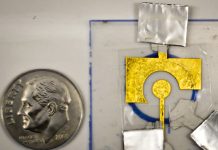
Researchers have achieved a scientific breakthrough by growing protein crystals in space, which has provided new insights into the structures of proteins, particularly the elusive hydrogen atoms that are critical for their functions.
This pioneering study, led by Dr. Victoria Drago at Oak Ridge National Laboratory (ORNL) in Tennessee, was recently published in the journal Cell Reports Physical Science.
Proteins are essential molecules in the body, involved in virtually every process within cells.
They are made up of various elements, including hydrogen, which constitutes nearly half of the atoms in proteins.
Despite their abundance, hydrogen atoms are so small that traditional methods used to study protein structures struggle to detect them. This limitation has left a significant gap in our understanding of how proteins work.
To overcome this challenge, Drago, who completed her Ph.D. in chemistry at The University of Toledo in 2022, explored a novel approach during her graduate studies with Dr. Timothy Mueser.
They decided to grow protein crystals under microgravity conditions aboard the International Space Station (ISS). Microgravity allows crystals to form larger and more perfect structures than those grown on Earth.
The protein they focused on was tryptophan synthase, an enzyme that plays a role in producing the amino acid tryptophan and uses vitamin B6 in its function.
Tryptophan synthase is particularly interesting to scientists and drug developers because it is not produced by humans but is found in various pathogenic microorganisms like Salmonella and Staphylococcus aureus.
This makes it a prime target for new drugs.
Drago and her team sent solutions of the enzyme to the ISS for crystal growth experiments during two missions: one month in 2018 and six months from 2019 to 2020.
The second mission yielded several exceptionally large and perfect crystals, some about one cubic millimeter in size, which is five times larger than those typically grown in laboratories on Earth.
Upon their return, these space-grown crystals were analyzed using neutron diffraction—a sophisticated technique that maps out the positions of every atom in a molecule. Neutron diffraction is particularly good at locating hydrogen atoms, which are difficult to detect with other methods.
The results were groundbreaking. For the first time, scientists could see the detailed locations of hydrogen atoms at the active site of the enzyme, revealing how these atoms contribute to the enzyme’s function.
This level of detail provides invaluable information for understanding protein mechanics and can significantly impact the design of new drugs.
This research not only opens up new avenues for studying protein structures but also demonstrates the potential of space-based scientific endeavors to enhance our understanding of fundamental biological processes.



